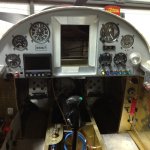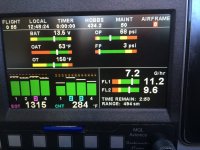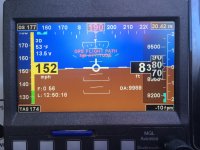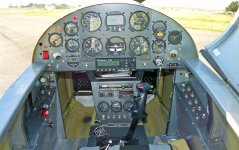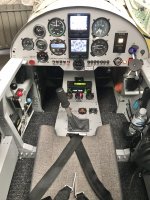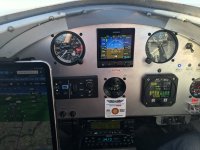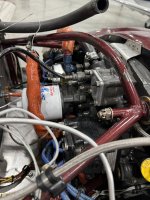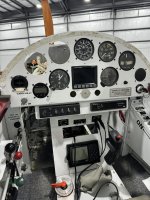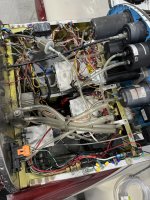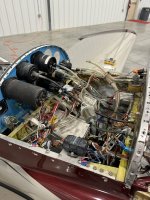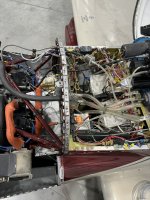I am a very new owner of my RV-4, and am loving it. I'm up to almost 30 hours in it, and am starting to think about the long run of ownership, including making some modifications/upgrades, and wanted to get some opinions.
It's an O-320-B2A FP 160hp engine with a 68" wood sterba cruise prop, sam james cowl and short gear.
One of the more annoying things I have experienced is that cylinders 2 and 4 get extremely hot when I am at high power settings. I can rarely run WOT unless I'm way up in the 9-11k range because of CHTs. I find more often than not I have to climb up a thousand feet at a time, and then really pull the power back to allow the cylinders to cool, and I feel like I shouldn't need to do this. I've tried climbing at slower speeds, but it seems anything below 150 mph indicated really heats those cylinders up quickly, and climbing at 150 indicated results in a painfully slow climb speed. Is this normal?
Also, it has seemed that my cruise speeds are rather slow compared to other comparable setups. I can't cruise at much more than 140-145KIAS unless I really push the temps or get RPMs up into the higher 2600s, which doesn't seem to line up with what I have heard other RV-4 owners perform at. Might there be a reason for this?
The next thing I want to do is upgrade the panel. I'm rocking a *very* VFR panel. I am planning on removing the vacuum pump next week, along with the DG and ADI, both of which are inop. I have already ordered the cover and gasket for the vacuum pump. I think eventually I might go with a full glass panel, but for now I'm just looking for an attitude indicator so I can feel comfy night flying. Is a single G5 really as easy to install as it seems?
The last thing that bothers me is the location of my transponder and radio. I have an old Narco AT 150 transponder and a COM 760 TSO radio that hang underneath the main panel and kind of get in the way of my knees while flying. Eventually I'd like to get a better radio that isn't as static-y, but for now I am wondering if they might fit better in a different spot. If I do move them, I assume I'd need to cut a new panel. How difficult is that to do?
Like I said, I'm very new to all of this, and am just exploring my options, so I'm open to any and all feedback. Thanks!
It's an O-320-B2A FP 160hp engine with a 68" wood sterba cruise prop, sam james cowl and short gear.
One of the more annoying things I have experienced is that cylinders 2 and 4 get extremely hot when I am at high power settings. I can rarely run WOT unless I'm way up in the 9-11k range because of CHTs. I find more often than not I have to climb up a thousand feet at a time, and then really pull the power back to allow the cylinders to cool, and I feel like I shouldn't need to do this. I've tried climbing at slower speeds, but it seems anything below 150 mph indicated really heats those cylinders up quickly, and climbing at 150 indicated results in a painfully slow climb speed. Is this normal?
Also, it has seemed that my cruise speeds are rather slow compared to other comparable setups. I can't cruise at much more than 140-145KIAS unless I really push the temps or get RPMs up into the higher 2600s, which doesn't seem to line up with what I have heard other RV-4 owners perform at. Might there be a reason for this?
The next thing I want to do is upgrade the panel. I'm rocking a *very* VFR panel. I am planning on removing the vacuum pump next week, along with the DG and ADI, both of which are inop. I have already ordered the cover and gasket for the vacuum pump. I think eventually I might go with a full glass panel, but for now I'm just looking for an attitude indicator so I can feel comfy night flying. Is a single G5 really as easy to install as it seems?
The last thing that bothers me is the location of my transponder and radio. I have an old Narco AT 150 transponder and a COM 760 TSO radio that hang underneath the main panel and kind of get in the way of my knees while flying. Eventually I'd like to get a better radio that isn't as static-y, but for now I am wondering if they might fit better in a different spot. If I do move them, I assume I'd need to cut a new panel. How difficult is that to do?
Like I said, I'm very new to all of this, and am just exploring my options, so I'm open to any and all feedback. Thanks!



